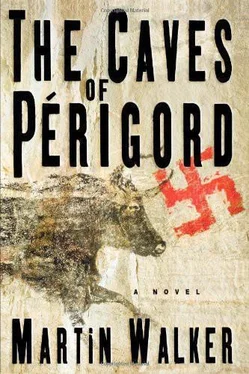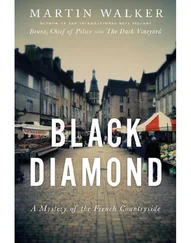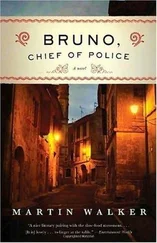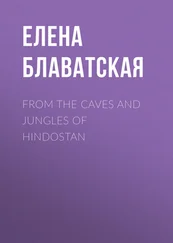Martin Walker - The Caves of Perigord
Здесь есть возможность читать онлайн «Martin Walker - The Caves of Perigord» весь текст электронной книги совершенно бесплатно (целиком полную версию без сокращений). В некоторых случаях можно слушать аудио, скачать через торрент в формате fb2 и присутствует краткое содержание. Жанр: Триллер, на английском языке. Описание произведения, (предисловие) а так же отзывы посетителей доступны на портале библиотеки ЛибКат.
- Название:The Caves of Perigord
- Автор:
- Жанр:
- Год:неизвестен
- ISBN:нет данных
- Рейтинг книги:4 / 5. Голосов: 1
-
Избранное:Добавить в избранное
- Отзывы:
-
Ваша оценка:
- 80
- 1
- 2
- 3
- 4
- 5
The Caves of Perigord: краткое содержание, описание и аннотация
Предлагаем к чтению аннотацию, описание, краткое содержание или предисловие (зависит от того, что написал сам автор книги «The Caves of Perigord»). Если вы не нашли необходимую информацию о книге — напишите в комментариях, мы постараемся отыскать её.
The Caves of Perigord — читать онлайн бесплатно полную книгу (весь текст) целиком
Ниже представлен текст книги, разбитый по страницам. Система сохранения места последней прочитанной страницы, позволяет с удобством читать онлайн бесплатно книгу «The Caves of Perigord», без необходимости каждый раз заново искать на чём Вы остановились. Поставьте закладку, и сможете в любой момент перейти на страницу, на которой закончили чтение.
Интервал:
Закладка:
They turned off at Montignac, crossed the river, and then ignored the signs that steered the tourists toward the mock cave that had been built for them, taking a side road that wound up the hill and through a thin screen of trees. Looking down, Lydia saw a long slope falling to a stretch of flatter land by the river, then the ground rising from the small town of Montignac beyond. Screen out the town, she thought, and this is the view the artists of seventeen thousand years ago saw as they left the cave each evening.
CHAPTER 11
The Vezere Valley, 15,000 B.C.
Deer was sketching, as he always did. Down by the riverbank, sitting cross-legged by the water, a small stretch of moist clay smoothed flat by his hand, and a twig drawing lines that seemed to flow unbidden from his fingers. Somehow it was never beasts that sprang from the clay at times like this. What was emerging now was that fallen tree on the far bank of the river, the sad way one branch leaned into the water, while the heavy trunk just squatted on the shore. The water built up around the obstruction of the branch, making a fat lip that flowed into two arms that raced along either side of the bough and set the leaves dancing into the sudden turbulence of the river. Heavy lines for the tree, lighter lines for the flow of water, but how could he capture the way the leaves danced? Quickly, he scratched three tiny shapes alongside each other. One leaf that was curling up, another that curled down, another bent into a suggestion of movement and merged into the one of the lines of the water. That was almost right.
“It’s the tree,” said a surprised voice. “The tree in the river.” Little Moon put down the skin in which she was fetching water, and bent over the sketch in the clay.
“Those are the leaves in the water, and that is the river,” she said eagerly, while Deer’s eyes fixed on the dappled lights that flowed over her face from the sunlight reflected on the water. She turned, looking at the fallen tree. “I didn’t think you could draw trees. I mean, I didn’t think you could just draw what you see. What is just there.”
“How can we draw anything unless we see it?”
“But I thought only the beasts were drawn.” Her voice was low with an automatic respect.
“In the caves, yes. Only beasts. But if you want to draw beasts, you must be able to draw other things. At least, I do. What I learn when I draw a tree, I can use when I draw a beast. Look, you see this water?” He pointed at the clay. “How do you draw water? I cannot. So I draw movement, and the shape in the movement. You see how the river flows around the tree, piling up behind the branch. That is what I try to draw. If I can find the movement in the water, I can put movement into the beasts.”
She looked again at the stretch of clay, and then at him.
“I am not to talk with you, my father says.” Quick as a bird, she flicked her head to look up toward the village. “I just happened to come to this stretch of bank for the water. We are smoking the meat you brought back from the hunt.”
“It is the easiest way down to the river,” he said reasonably. Along with the other apprentices from the cave, he had spent the previous day cutting saplings and fixing the frames that the women would use to scrape and dry the reindeer skins. Then they had dug the fire pits and erected the teepees above them where the reindeer meat would be smoked.
“What else do you draw?” she asked.
“Flowers, and those hills over there, and the moon at night, and the ways caves appear in the curves of rock like a smile appears on a face.”
“A face? You cannot draw faces. You cannot draw people. That is forbidden.”
“Does your father say that?”
“When I was younger, I used to make shapes in the clay. Like you, only not as good. I did little figures once, like sticks. Big thin ones for men and round ones for women and little ones for children and my father was angry and rubbed them out. Drawings capture the spirit, he told me, which is why they paint the beasts in the caves. It is forbidden to draw people.”
“It is not forbidden to draw trees or water.”
“I don’t know.”
Suddenly he leaned forward to put a hand into the river, splashed water on the clay, and smoothed out his tree. “Show me what you draw,” he instructed, and put the twig into her hand.
“I cannot,” she said, darting her eyes up toward the village again. “I must take the water to soak the skins and dampen the fires for the smoking.”
“Do it without me looking. I’ll get your water.” He rose, a fluid movement, picked up the skin and its carrying stick and splashed through the shallows to the deeper water where the current flowed fast and looked back to see Little Moon kneeling over the clay, the twig darting quickly across it. He threaded the stick through the holes that had been carefully sewn in the edges of the skin, filled it with water, and used the little thongs to secure it. He came back with deliberate slowness, watching the village and the small humped tent where the old Keeper of the Bison used to sleep. It was his now. The village was stirring busily, smoke already rising from the narrow holes at the top of each of the teepees where the meat already hung, sliced by flintknives. The sun was already a hand’s breadth above the hill. His eyes turned back to Little Moon, and he felt that strange sensation when he was not just looking, but seeing. There was the curve of Moon’s back, the fall of her hair, and then the flat plane of the clay, and the river dancing below it. The shapes fitted together in a way that he could almost feel, a balance of curve and flatness and movement. She looked up and broke the pattern, but in a way that pleased him. Her eyes danced, just like the water. Her limbs were smoother than the clay.
He splashed toward her, holding out the dripping log with its sagging skin full of water. She rose and took it, their hands touching, and then she turned and left, as quickly as she could under the heavy burden, staggering once as she changed her step to avoid stepping in her sketch in the clay.
He stayed in the shallows, reluctant to step forward and see what she had done. He looked across once more to the village and at the bustle beyond where smoke rose and the sound of the Flint men knapping their stones brought the accustomed rhythm to the day. Way up the hill, a thin trail of smoke twirled by the entrance to the cave. The Keeper of the Bulls had made his morning sacrifice. The other apprentices would be trudging up the slope to mix colors and build more scaffolding. The Keeper of the Horses might need his help today. Deer had already learned the way the Keeper of the Horses made the manes, blowing the colors from his mouth through the different shapes he could make with his thumb and finger.
Finally, unable to put off the moment any longer, he moved slowly forward through the water, as if it were as thick as mud, to look at Little Moon’s sketch. And caught his breath with surprise.
It was a man’s shape, thighs emerging from the river, the waist curved and the weight of the chest and shoulders taut to take the weight of the log and the skin, filling in the river. The head was just a suggestion of shape, and a few swift curls of hair. There was no face, no identity, but it was him, as he had been just a few moments ago. Him in the river, as caught by her. Caught. No, that was not the word she had used, the word she had learned from her father. Captured. She had captured his spirit. Indeed she had. He admired her work, the curve of thigh and back, the suggestion of hair. The water was just three quick lines, scored deeper where they began and then becoming shallower, in a way that suggested both movement and direction. There was a curl of wave by his forward thigh that he liked. A man in the river. Him.
Читать дальшеИнтервал:
Закладка:
Похожие книги на «The Caves of Perigord»
Представляем Вашему вниманию похожие книги на «The Caves of Perigord» списком для выбора. Мы отобрали схожую по названию и смыслу литературу в надежде предоставить читателям больше вариантов отыскать новые, интересные, ещё непрочитанные произведения.
Обсуждение, отзывы о книге «The Caves of Perigord» и просто собственные мнения читателей. Оставьте ваши комментарии, напишите, что Вы думаете о произведении, его смысле или главных героях. Укажите что конкретно понравилось, а что нет, и почему Вы так считаете.












